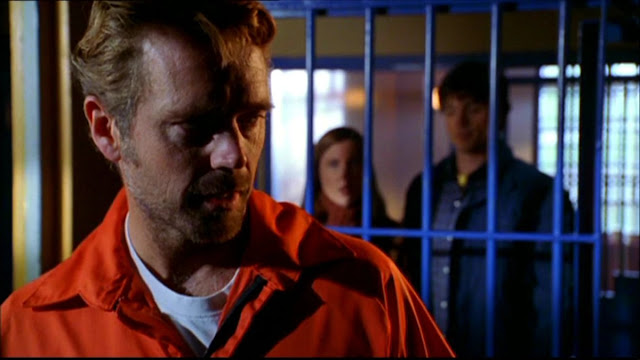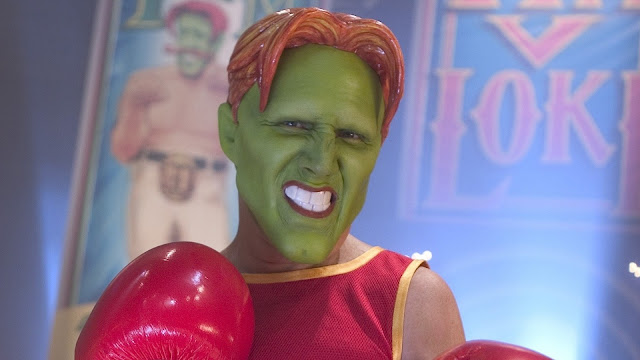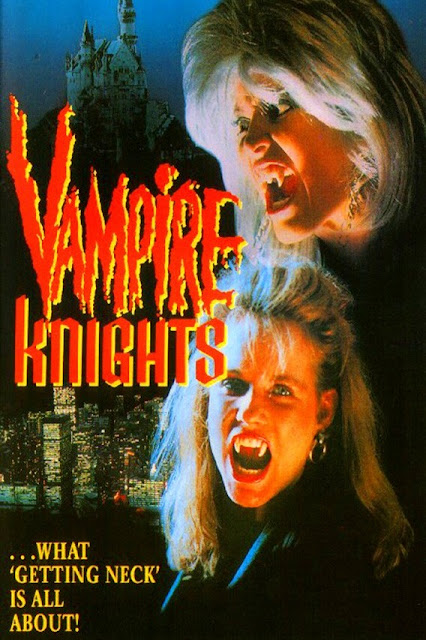PHENOMENALITY: *marvelous*
MYTHICITY: (1) *poor,* (2)*fair*
FRYEAN MYTHOS: *comedy*
CAMPBELLIAN FUNCTION: *psychological*
Some journeymen directors manage to work out reasonably long careers in the business without distinguishing themselves. Others enjoy much shorter careers, but somehow manage to grind out one interesting film before taking their talents elsewhere. Obviously, the latter are much easier to sum up due to fewer flicks to analyze. For instance, it didn't take me long to run through the four metaphenomenal films of Richard Cunha on this blog, but the three I didn't care for take on a little luster from the one I did like (which was, to be specific, the pulpy SHE DEMONS).
Unlike Cunha, Daniel Peterson is still alive and working, and I've no information on his post-1980s work, which includes shorts, TV episodes and some very obscure films. So I won't do any sort of overview on Peterson's career, but just compare and contrast his two 1980s films-- one bad and one good,
VAMPIRE KNIGHTS looks much like a botched student film. There aren't but four sets and a little driving around in a car, and only two or three of the performers had anything like professional movie careers. As the title slightly suggests, this is a vampire comedy, but the script, solely credited to director Peterson, includes only one or two decent jokes. The whole package suggests no talent whatever.
Two young guys, Tom and Bobbie, hope to score at a local party, and they try to talk their buddy Ken from going along. Ken would rather sit at home and watch some direct-access show in which the host shows horror movies and tries to sell memberships in a "Vampire Knights" club he sponsors. Ken (played by one of the few actors in the film with a modest career, Ken Abraham) apparently believes vampires are real, but eventually his friends talk him into partying.
On the way to the party, the three guys pick up a good-looking female hitchhiker. After a little badinage, she turns into a blue-faced wolf-ghoul, but just as she does, the driver hits the brakes for other reasons, causing the monster-woman to fly out the van's back door-- without any of the guys noticing what happened to her. This remains the general level of the humor.
The guys attend the party, see one girl displaying a little boob, and meet three chicks from Transylvania who just "flew in." The girls-- two aggressive vamps and one rather passive one-- target the trio for blood-bags. But even though the lady vamps have already killed a couple of victims at the party, they become apprehensive because Ken boasts about being a Vampire Knight. This apparently causes the girls to decide they'd better suss these guys out, even though the guys convey no impression of being anything but simple goofballs on the make. The girls meet the guys back at their place, and soon Bobbie and Tom get turned into vamp-chow. Ken inadvertently charms the shy vampire, and she ends up helping him kill the other two.
There are only two points of interest here. One concerns vampire-movie mythology, in that it's standard to picture male vampires as super-strong, but not so much the female of the species. Peterson does have a scene in which the lead vamp-girl (Robin Stille, who also appeared in a handful of pro films) beats up Ken twice, only to die because she doesn't kill him right away. The other point is the movie's one good joke, wherein the guy on Ken's TV tries to wheedle money out of viewers after the fashion of Oral Roberts. But all the rest is tedium.
Yet, within the next year, Peterson came out with a wholly professional effort, GIRLFRIEND FROM HELL, which as one might guess is the film on his resume I consider a standout.
Is GIRLFRIEND a great film, even as a wacky supernatural comedy? No. But the improvement after VAMPIRE KNIGHTS is positively exponential. The main actors are all professionals. The sets, while limited, don't look repulsively cheap, and the wardrobe is more impressive. And there's actually a tiny psychological motif related to "the war between men and women."
Whereas KNIGHTS just had three random vampire girls killing victims, almost all of the female characters have an unusual aggressiveness. As in KNIGHTS the activity coalesces around a party being given by teens Alice and Rocco, a couple best described by Rocco's line to Alice; "You've been hitting me a lot harder lately." Diane (Lezlie Deane) talks a shy friend, Maggie (Liane Curtis), into attending the party, where Diane will meet with her boyfriend and introduce Maggie to a blind date.
However, two supernatural entities choose to attend as well. The first is billed only as "The Devil," though this devil is innately feminine. The Devil possesses Maggie, turning her into a "Miss Hyde" who drags Diane, Diane's boyfriend and the blind date into dangerous situations, like almost running down a bunch of nuns with a van. (The nuns respond by pulling out heavy firearms and shooting at the vehicle.) Returning to the party, Demon Maggie begins using her powers to wreak weird transformations on the unfortunate young people.
Then the second entity arrives, in pursuit of the Devil. This is Chaser (Dana Ashbrook), a goofy "angel" who's in charge of trying to chase down the Devil and exorcise her when she possesses people. Chaser however is far from angelic; he's a horndog who'll make a pass at any nubile woman he sees, including Diane and Demon Maggie. To further complicate things, Chaser and the Devil had a fling before he knew who she was. Thus the ensuing slapstick violence that dominates the film is mostly about women getting furious at dorky guys.
Though Curtis and Deane are both good, Ashbrook holds the flick together with his energetic portrait of an oversexed would-be lothario who only carries out his exorcism duties because that's his heavenly assignment. Most of the jokes land well enough for this type of film, even though the very inferior KNIGHTS almost provides a plot-template for GIRLFRIEND. (Like KNIGHTS, this movie has just one short booby-shot.) Unlike KNIGHTS, Peterson does work in an amusing sequence wherein Chaser and Diane get bounced around to different time-frames by Chaser's malfunctioning teleport-device. This stunt helps to distract from the majority of scenes taking place in and around one big house-set.
The film ends with Maggie getting safely exorcised, remembering nothing of her walk on the wild side. The Devil escapes into the ether again. Chaser is obliged to pursue her again, though not without getting one last sock in the schnozz from Diane, who irrationally sympathizes with the Devil after hearing how Chaser mistreated her. There were a lot of goony comedies in the 1980s, but this one, while no classic, deserves to be better known.





















